 The name Montparnasse stems from the nickname "Mount Parnassus" (In Greek mythology, home to the nine Greek goddesses –
The name Montparnasse stems from the nickname "Mount Parnassus" (In Greek mythology, home to the nine Greek goddesses – the Muses – of the arts and sciences) given to the hilly neighbourhood in the 17th century by students who came there to recite poetry.
the Muses – of the arts and sciences) given to the hilly neighbourhood in the 17th century by students who came there to recite poetry.
The hill was levelled to construct the Boulevard Montparnasse in the 18th century. During the French Revolution many dance halls and cabarets opened their doors.
The area is also known for cafes and bars, such as the Breton restaurants specialising in crêpes (thin pancakes)
 located a few blocks from the Gare Montparnasse.
located a few blocks from the Gare Montparnasse.Think of Montparnasse and you might be tempted to imagine the district's

1921 Medjinsky- Kiki de Montparnasse,
Alice Ernestine Prin (October 2, 1901 - April 29, 1953), was a French artists' model, nightclub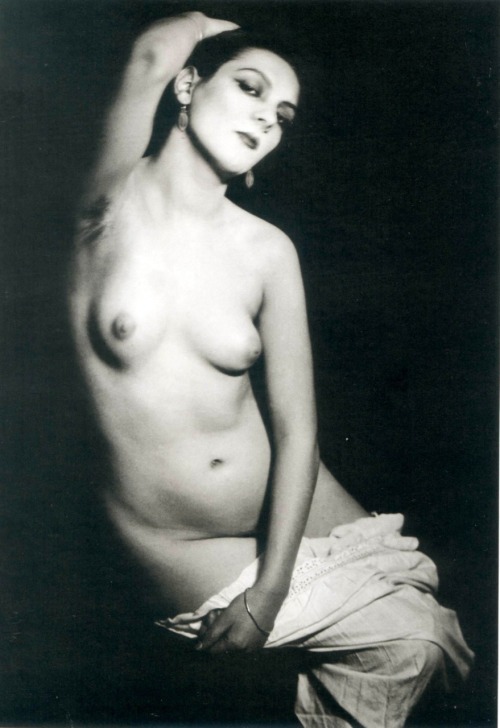 singer, actress and painter. Her chosen name was simply Kiki, but she was also referred to as Reine de la Montparnasse
singer, actress and painter. Her chosen name was simply Kiki, but she was also referred to as Reine de la Montparnasse ("the Queen of Montparnasse") and Kiki de Montparnasse ("Kiki of Montparnasse").
("the Queen of Montparnasse") and Kiki de Montparnasse ("Kiki of Montparnasse").
She flourished in, and helped define, the 1920s liberated culture of Paris. singer, actress and painter. Her chosen name was simply Kiki, but she was also referred to as Reine de la Montparnasse
singer, actress and painter. Her chosen name was simply Kiki, but she was also referred to as Reine de la Montparnasse ("the Queen of Montparnasse") and Kiki de Montparnasse ("Kiki of Montparnasse").
("the Queen of Montparnasse") and Kiki de Montparnasse ("Kiki of Montparnasse").
In 1996, biographers Billy Klüver and Julie Martin called her
 one of the century's first truly independent women.Kiki became a fixture in the Montparnasse social scene and a popular artists
one of the century's first truly independent women.Kiki became a fixture in the Montparnasse social scene and a popular artists model, posing for dozens of artists, including Chaim Soutine, Julian Mandel, Tsuguharu Foujita,
model, posing for dozens of artists, including Chaim Soutine, Julian Mandel, Tsuguharu Foujita,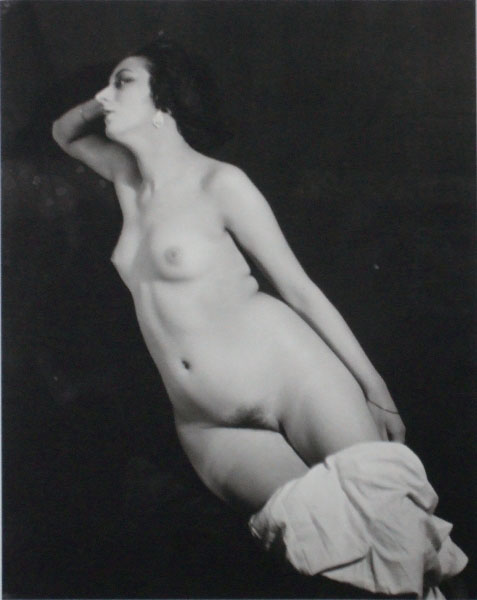 Francis Picabia, Jean Cocteau, Arno Breker, Alexander Calder, Per Krohg, Hermine David, Pablo Gargallo, Mayo, and Tono Salazar. Moise Kisling painted a portrait of Kiki titled Nu assis,
Francis Picabia, Jean Cocteau, Arno Breker, Alexander Calder, Per Krohg, Hermine David, Pablo Gargallo, Mayo, and Tono Salazar. Moise Kisling painted a portrait of Kiki titled Nu assis, one of his best known.
one of his best known.  Man Ray, her companion for most of the 1920s, made hundreds of portraits of her.
Man Ray, her companion for most of the 1920s, made hundreds of portraits of her.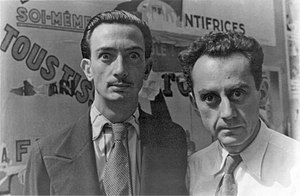 She is the subject of some of his best-known images, including Le violon d'Ingres and Noire et blanche. She appears in nine short and often experimental films, including Fernand Léger's Ballet mécanique without any credit.A painter in her own right, in 1927 Kiki had a sold-out exhibition of her paintings at Galerie au Sacre du Printemps in Paris. Signing her artwork with her chosen single name, she usually noted the year. Her drawings and paintings comprise portraits,
She is the subject of some of his best-known images, including Le violon d'Ingres and Noire et blanche. She appears in nine short and often experimental films, including Fernand Léger's Ballet mécanique without any credit.A painter in her own right, in 1927 Kiki had a sold-out exhibition of her paintings at Galerie au Sacre du Printemps in Paris. Signing her artwork with her chosen single name, she usually noted the year. Her drawings and paintings comprise portraits,
self-portraits, social activities, fanciful animals, and dreamy landscapes composed in a light, slightly uneven, expressionist style that is a reflection of her easy-going manner and boundless optimism.
PHOTO (R):

Bronze, Musée de Louvre.
Ernest Hemingway and Tsuguharu Foujita provided the introduction for her 1929 memoirs. Entitled "Kiki's Memoirs", it was published the following year in New York City by Black Manikin Press, but was immediately banned by the United States government. Kiki's Memoirs remained banned in the United States through the late 1970s when it was still held in the section for banned books in the New York Public Library. Finally, in 1996, her autobiography was translated into English and published.[citation needed]
Kiki's music hall performances in black hose and garters included crowd-pleasing risqué songs, which were uninhibited, yet inoffensive. For a few years during the 1930s, she owned a Montparnasse cabaret, which she named Chez Kiki.

The symbol of bohemian and creative Paris, at age of twenty-eight she was declared Queen of
 apache shirt by mr freedom
apache shirt by mr freedomMontparnasse. Even during difficult times, she maintained her positive attitude,
 saying "all I need is an onion, a bit of bread, and a bottle of red [wine]; and I will always find somebody to offer me that."
saying "all I need is an onion, a bit of bread, and a bottle of red [wine]; and I will always find somebody to offer me that."  She left Paris to avoid the occupying German army during World War Two, which entered the city in June 1940, and she never returned as a resident.Kiki died in 1953 in Sanary-sur-Mer, France,
She left Paris to avoid the occupying German army during World War Two, which entered the city in June 1940, and she never returned as a resident.Kiki died in 1953 in Sanary-sur-Mer, France, at the age of fifty-one, apparently of complications of alcoholism or drug dependence.
at the age of fifty-one, apparently of complications of alcoholism or drug dependence. A large crowd of artists and fans attended her Paris funeral and followed the procession to her interment in the Cimetière du Montparnasse. Her tomb identifies her as "Kiki, 1901-1953,
A large crowd of artists and fans attended her Paris funeral and followed the procession to her interment in the Cimetière du Montparnasse. Her tomb identifies her as "Kiki, 1901-1953, singer, actress, painter, Queen of Montparnasse."
singer, actress, painter, Queen of Montparnasse." Tsuguharu Foujita
Tsuguharu Foujita has said that, with Kiki, the glorious days of Montparnasse were buried forever.
has said that, with Kiki, the glorious days of Montparnasse were buried forever.
Long after her death, Kiki remains the embodiment of the outspokenness, audacity and creativity that marked that period of Montparnasse. In her honor, a daylily has been named
 Kiki de Montparnasse.
Kiki de Montparnasse.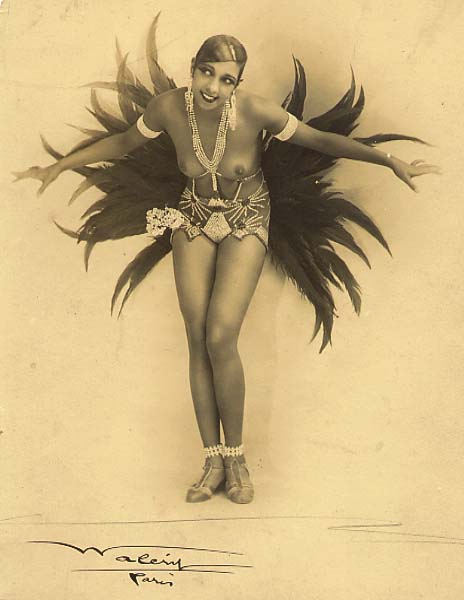 Whilst vestiges of this period remain, the truth is that the most visible parts of the area today
Whilst vestiges of this period remain, the truth is that the most visible parts of the area today are pure 1970s concrete. Will these elements hold the same cachet for future generations?
are pure 1970s concrete. Will these elements hold the same cachet for future generations? 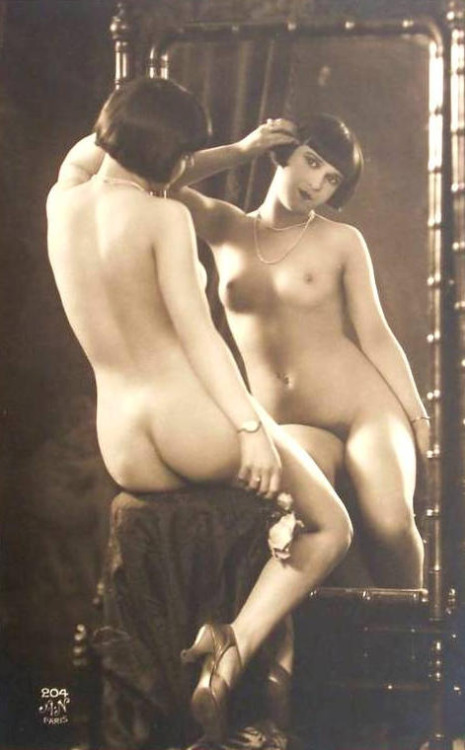
Planted at the heart of the 1970s redevelopment of the Montparnasse district is the famous tower. Still a controversial construction despite the fact that it is approaching its 40th birthday, it also shelters at its feet a rather banal shopping centre.
 But whilst the tower tries to dress with the times (a system of LED lighting that
But whilst the tower tries to dress with the times (a system of LED lighting that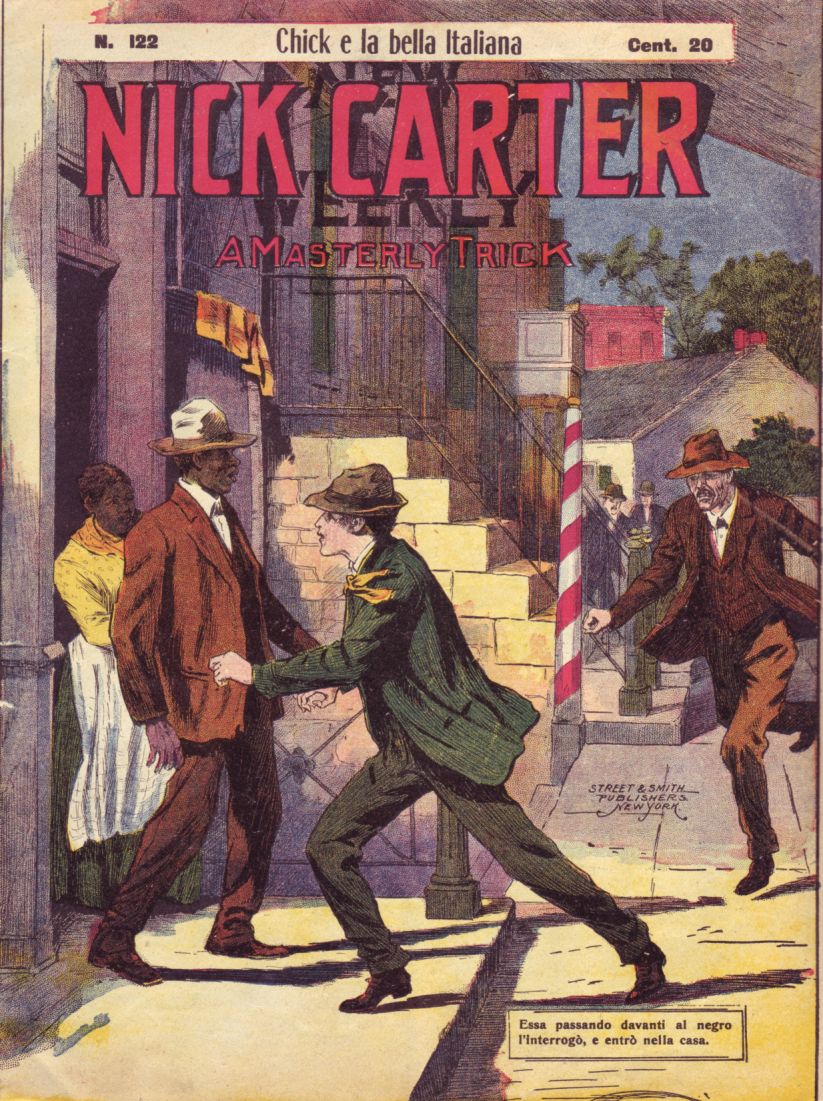 changes with the seasons has recently been introduced),
changes with the seasons has recently been introduced), the shopping centre is more of a throwback.
the shopping centre is more of a throwback. 
The problem with being modern is that in fact you rapidly become outdated. The very definition of a shopping centre
 is that it is a home to fashion, the area now is total crap and theres no reason to go there.
is that it is a home to fashion, the area now is total crap and theres no reason to go there. in appearance it should always look new. The Montparnasse centre has had
in appearance it should always look new. The Montparnasse centre has had many rebirths, but interestingly there are still many fixtures and fittings that have not changed since its inception.
many rebirths, but interestingly there are still many fixtures and fittings that have not changed since its inception. pola negri
pola negriThe most visible element is the signage, especially in the basement (labelled rather charmingly here as the 'Rez de Metro').
 The impression is that these signs have simply been overlooked, and if anyone noticed they would
The impression is that these signs have simply been overlooked, and if anyone noticed they would quickly be torn down and replaced with a uniform colour-free sans serif font.
quickly be torn down and replaced with a uniform colour-free sans serif font.
jeanne Hébuterne modi's wife
Meaux, Seine-et-Marne, 6 aprile 1898 – Parigi, 26 gennaio 1920
Autoritratti
Corte di atelier
La suicida
La morte di Jeanne
Ritratto del fratello
Ritratto della madre
Here the scripts are curving and multi-coloured, the mixture of the child-like and
 the hand-created giving a feeling of personalisation and individuality.
the hand-created giving a feeling of personalisation and individuality. Another vintage element in one sign (see below) is the usage of the word an anachronism today that screams 1970s.
Another vintage element in one sign (see below) is the usage of the word an anachronism today that screams 1970s. 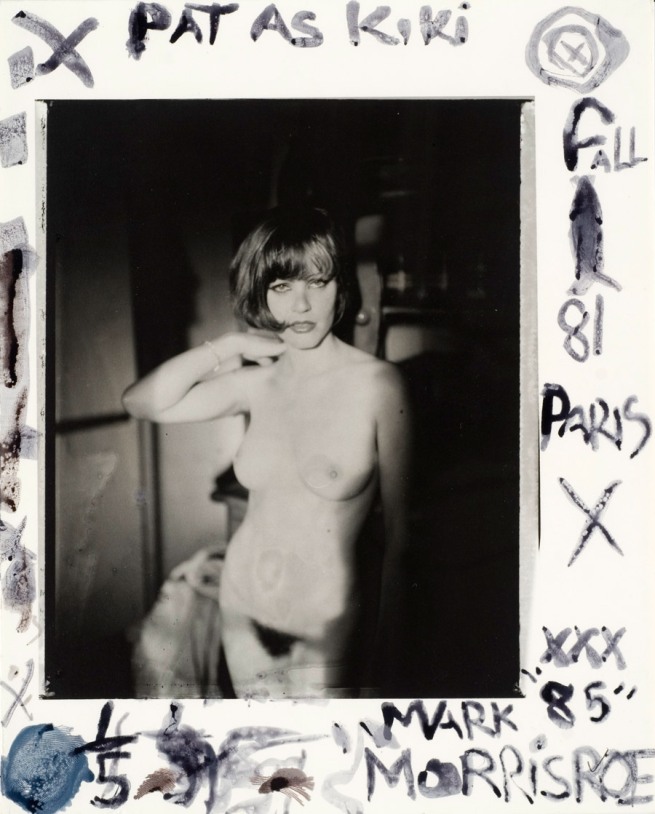
Despite a temptation to link the C&A sign above to this theme, we won't make any reference to it here. However, just below is a small sign that I missed during my visit, but which I noticed when looking at my photos.
during my visit, but which I noticed when looking at my photos. 
It seems that the concrete corridors of the shopping centre were an instant attraction for roller-skaters, and therefore an activity that the centre managers set out to ban. This sign gives an idea of the footwear fashions of the time!
Elsewhere in Paris we admire the 'original' fittings of the covered shopping arcades of the 18th and 19th centuries, places that had also previously fallen out of fashion. The layers or time - the false ceilings, seperating walls, coats of paint - are removed, taking us back to the vision of the first architects and decorators. We talk of authenticity, of rediscovery, but what would we keep today if we could put ourselves in the shoes of an archeologist from the future?Nothing.

Foujita went to Montparnasse in Paris, France. When he arrived there, knowing nobody, he met Amedeo Modigliani, Pascin, Chaim Soutine, and Fernand Léger and became friends with Juan Gris, Pablo Picasso and Henri Matisse. Foujita claimed in his memoir that he met Picasso less than a week after his arrival, but a recent biographer, relying on letters Foujita sent to his first wife in Japan, clearly shows that it was several months until he met Picasso. He also took dance lessons from the legendary Isadora Duncan
Foujita had his first studio at no. 5 rue Delambre in Montparnasse where he became the envy of everyone when he eventually made enough money to install a bathtub with hot running water. Many models came over to Foujita's place to enjoy this luxury, among them Man Ray's very liberated lover, Kiki, who boldly posed for Foujita in the nude in the outdoor courtyard. Another portrait of Kiki titled "Reclining Nude with Toile de Jouy," shows her lying naked against an ivory-white background. It was the sensation of Paris at the Salon d'Automne in 1922, selling for more than 8,000 francs.
His life in Montparnasse is documented in several of his works, including the etching A la Rotonde or Café de la Rotonde of 1925/7 , part of the Tableaux de Paris series published in 1929.
, part of the Tableaux de Paris series published in 1929.
Foujita's first marriage was in Japan whilst still a student. After travelling to Paris to pursue his art, a quiet divorce was arranged.
In March 1917 in the Café de la Rotonde, Foujita met a young lady by the name of Fernande Barrey. At first, she totally ignored Foujita's efforts to engage her in conversation. However, early the next morning, Foujita showed up at Fernande's place with a blue corsage he had made overnight. Intrigued, she offered him a pot of tea and they were married 13 days later.
Within a few years, particularly after his 1918 exposition, he achieved great fame as a painter of beautiful women and cats in a very original technique. He is one of the few Montparnasse artists who made a great deal of money in his early years. By 1925, Tsuguharu Foujita had received the Belgian Order of Leopold and the French government awarded him the Legion of Honor.
In 1918, a trip to the south of France was organized by the Polish poet Léopold Zborowski , who had the idea that his artist-friends could sell pictures there to rich tourists. Foujita and his wife went along as did Soutine, Modigliani with his lover, Jeanne Hébuterne.
, who had the idea that his artist-friends could sell pictures there to rich tourists. Foujita and his wife went along as did Soutine, Modigliani with his lover, Jeanne Hébuterne. The trip was not, however, a success and the group had to survive on the advances that Foujita had obtained from his Paris dealer. By the time the final reckoning arrived even those funds had run out, and their landlord, ignoring the offers of pieces of art, confiscated all their baggage in lieu of payment.
The trip was not, however, a success and the group had to survive on the advances that Foujita had obtained from his Paris dealer. By the time the final reckoning arrived even those funds had run out, and their landlord, ignoring the offers of pieces of art, confiscated all their baggage in lieu of payment.
In 1921, he became involved with Lucie Badoul, whom he called Youki, or "Rose Snow". She would become his third wife. The relationship ended when she became the lover, then the wife of the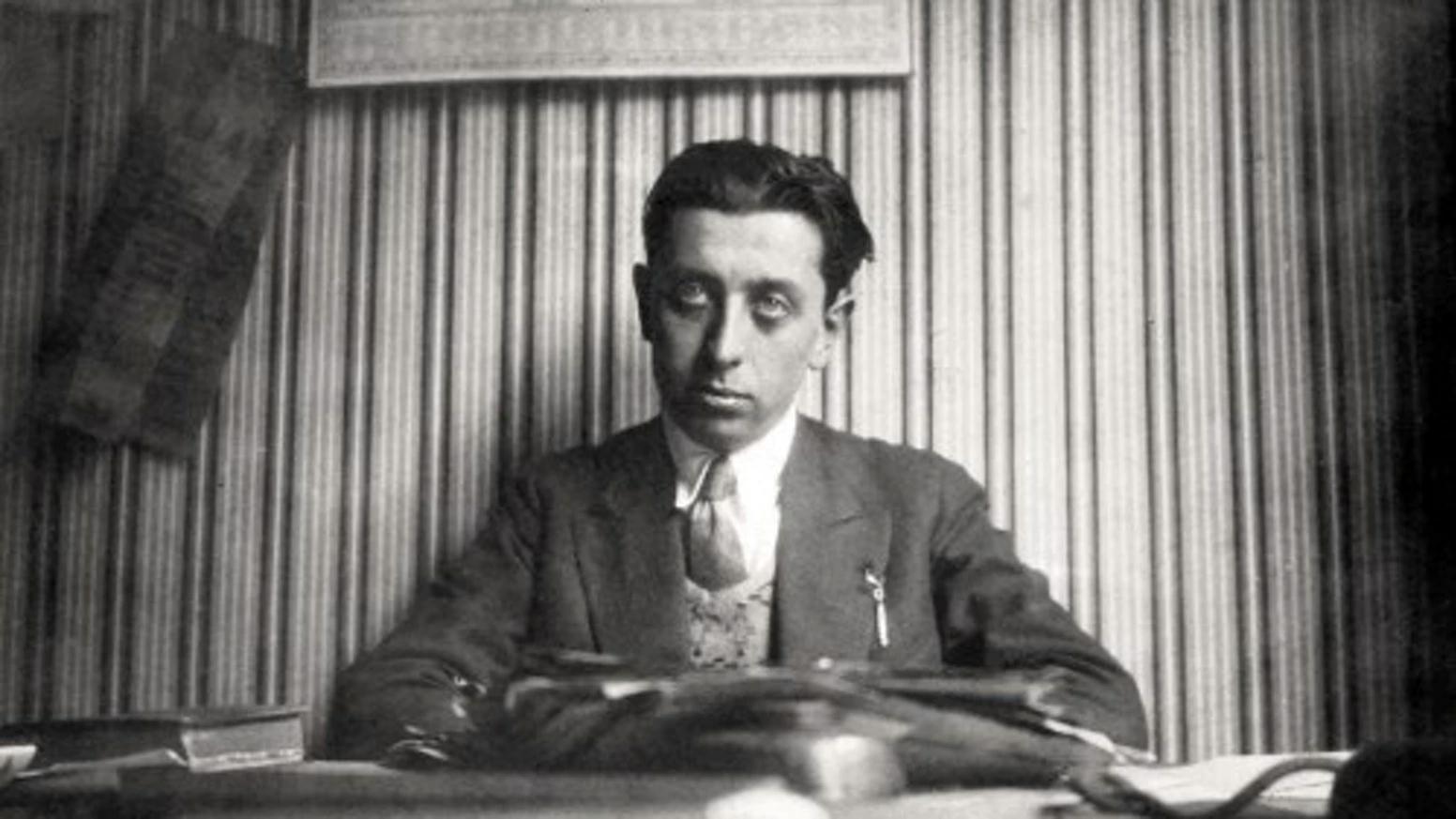 surrealist poet Robert Desnos.Desnos died in "Malá pevnost", which was an inner part of Terezín used only for political prisoners, from typhoid, only weeks after the camp's liberation. He wrote poems during his imprisonment which were accidentally destroyed following his death
surrealist poet Robert Desnos.Desnos died in "Malá pevnost", which was an inner part of Terezín used only for political prisoners, from typhoid, only weeks after the camp's liberation. He wrote poems during his imprisonment which were accidentally destroyed following his death
After the breakup of his third marriage, and his flight to Brazil in 1931 (with his new love, Mady), Foujita traveled and painted all over Latin America, giving hugely successful exhibitions along the way. In Buenos Aires, Argentina, 60,000 people attended his exhibition, and more than 10,000 queued up for his autograph. In 1932 he contributed a work to the Pax Mundi, a large folio book produced by the League of Nations calling for a prolonged world peace However, by 1933 he was welcomed back as a minor celebrity to Japan where he stayed and became a noted producer of militaristic propaganda during the war. For example, in 1938 the Imperial Navy Information Office supported his visit to China as an official war artist.
Fujita left Japan after the war. Today, his works can be found in the Bridgestone Museum of Art and in the Museum of Contemporary Art in Tokyo, and more than 100 in the Hirano Masakichi Art Museum in Akita.
On his return to France, Foujita converted to Catholicism. He was baptised in Reims cathedral on 14 October 1959, with René Lalou (the head of the Mumm champagne house) as his godfather and Françoise Taittinger as his godmother. This is reflected in his last major work,at the age of 80, the design, building and decoration of the Foujita chapel in the gardens of the Mumm champagne house in Reims, France, which he completed in 1966, not long before his death.
Tsuguharu Foujita died of cancer on January 29, 1968 in Zürich, Switzerland and was interred in the Cimetière de Villiers-le-Bâcle, Essonne département, France. In 2003, his coffin was reinterred at the Foujita chapel under the flagstones in the position he originally intended when constructing the chapel
Chaïm Soutine (January 13, 1893 – August 9, 1943) was a French painter of Russian Jewish origin. Soutine made a major contribution to the expressionist movement while living in Paris.
Inspired by classic painting in the European tradition, exemplified by the works of Rembrandt, Chardin and Courbet, Soutine developed an individual style more concerned with shape, color, and texture over representation, which served as a bridge between more traditional approaches and the developing form of Abstract Expressionism.
Soutine was born in Smilavichy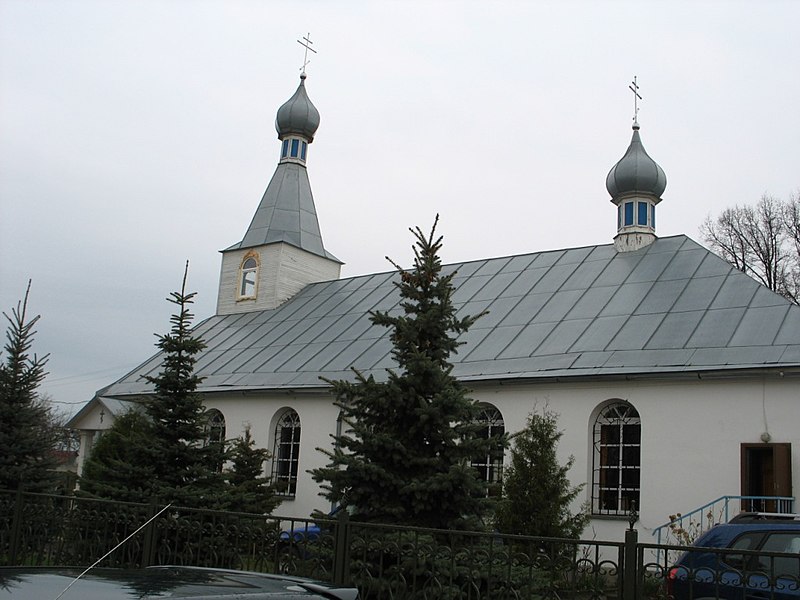 near Minsk, (modern day) Belarus (then part of the Russian Empire). He was the tenth of eleven children. From 1910–1913 he studied in Vilnius at the Vilna Academy of Fine Arts. In 1913, with his friends Pinchus Kremegne (1890–1981) and Michel Kikoine (1892–1968), he emigrated to Paris, where he studied at the École des Beaux-Arts under Fernand Cormon. He soon developed a highly personal vision and painting technique.
near Minsk, (modern day) Belarus (then part of the Russian Empire). He was the tenth of eleven children. From 1910–1913 he studied in Vilnius at the Vilna Academy of Fine Arts. In 1913, with his friends Pinchus Kremegne (1890–1981) and Michel Kikoine (1892–1968), he emigrated to Paris, where he studied at the École des Beaux-Arts under Fernand Cormon. He soon developed a highly personal vision and painting technique.
For a time, he and his friends lived at La Ruche, a residence for struggling artists in Montparnasse where he became friends with Amedeo Modigliani (1884–1920).
a residence for struggling artists in Montparnasse where he became friends with Amedeo Modigliani (1884–1920).
La Ruche (literally the beehive) is an artist's residence at the Paris South-Western outskirts.
Located in the "Passage Dantzig," in the 15th arrondissement of Paris, La Ruche was an old three-storey circular structure that got its name because it looked more like a large beehive than any dwelling for humans. Originally a temporary building designed by Gustave Eiffel for use as a wine rotunda at the Great Exposition of 1900, the structure was dismantled and re-erected as low-cost studios for artists by Alfred Boucher
Great Exposition of 1900, the structure was dismantled and re-erected as low-cost studios for artists by Alfred Boucher (1850–1934), a fireman and sculptor, who wanted to help young artists by providing them with shared models and with an exhibition space open to all residents. As well as to artists, La Ruche became a home to the usual array of drunks, misfits, and almost every penniless soul needing a roof over their head.
(1850–1934), a fireman and sculptor, who wanted to help young artists by providing them with shared models and with an exhibition space open to all residents. As well as to artists, La Ruche became a home to the usual array of drunks, misfits, and almost every penniless soul needing a roof over their head.
At La Ruche the rent was dirt cheap; and no one was evicted for non-payment. When hungry, many would wander over to artist Marie Vassilieff's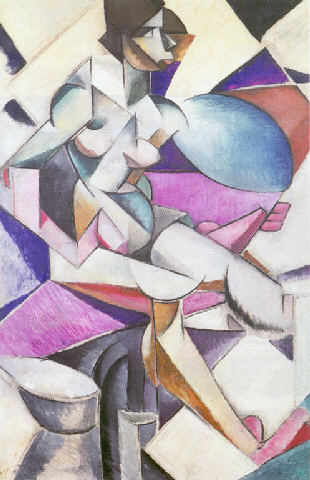 soup kitchen (more genteely called her "Cantine") for a meal and conversation with fellow starving artists. The Russian painter Pinchus Kremegne got off the train at the Gare de l'Est with three rubles in his pocket. The only words in French he knew was the phrase "Passage Dantzig"; but that was all he needed to get him there.
soup kitchen (more genteely called her "Cantine") for a meal and conversation with fellow starving artists. The Russian painter Pinchus Kremegne got off the train at the Gare de l'Est with three rubles in his pocket. The only words in French he knew was the phrase "Passage Dantzig"; but that was all he needed to get him there.
In the history of mankind, like Montparnasse or Montmartre, few places have ever housed such artistic talent as could be found at La Ruche. At one time or another in those early years of the 20th century, Guillaume Apollinaire, Alexander Archipenko, Joseph Csaky, Alexandre Altmann, Ossip Zadkine, Moise Kisling, Marc Chagall, Max Pechstein, Nina Hamnett,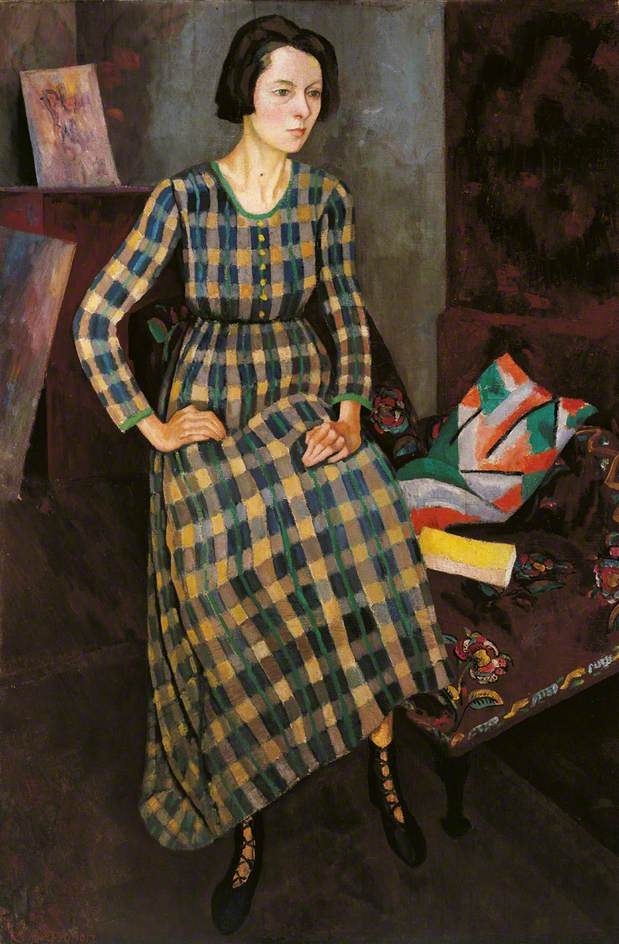 Fernand Léger, Jacques Lipchitz, Pinchus Kremegne, Max Jacob, Blaise Cendrars,
Fernand Léger, Jacques Lipchitz, Pinchus Kremegne, Max Jacob, Blaise Cendrars,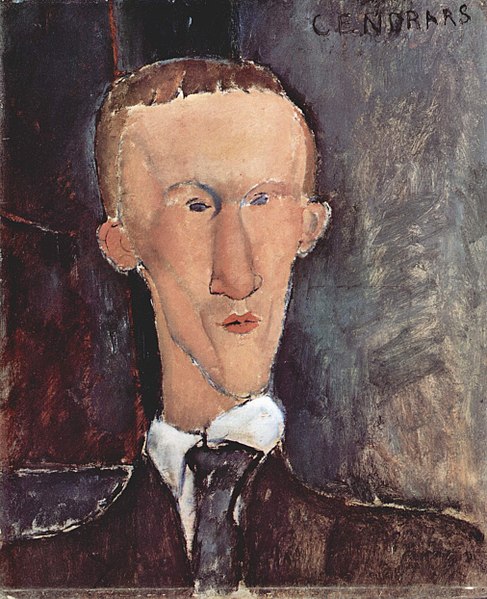 Chaim Soutine, Robert Delaunay, Amedeo Modigliani, Constantin Brâncuşi, Amshey Nurenberg, Diego Rivera, Marevna, Luigi Guardigli and others, called the place home or frequented it. Today, works by some of these desperately poor residents and their close friends sell well, even in the millions of dollars.
Chaim Soutine, Robert Delaunay, Amedeo Modigliani, Constantin Brâncuşi, Amshey Nurenberg, Diego Rivera, Marevna, Luigi Guardigli and others, called the place home or frequented it. Today, works by some of these desperately poor residents and their close friends sell well, even in the millions of dollars.
La Ruche went into decline during World War II; and by the time of the 1968 real estate boom, it was threatened with demolition by developers. However, with the support of luminaries such as Jean-Paul Sartre, Alexander Calder, Jean Renoir, and René Char, new management with a preservation mission took over in 1971, turning it into a collection of working studios.
Its interior is not open to the general public, although the exterior of La Ruche alone is worth a visit. Paintings, sculptures, photographs from its heyday and films showing some of its residents may be viewed at the Musée du Montparnasse, 21 av du Maine.
Modigliani painted Soutine's portrait several times, most famously in 1917, on a door of an apartment belonging to Léopold Zborowski (1889–1932), who was their art dealer. Zborowski supported Soutine through World War I, taking the struggling artist with him to Nice to escape the German bombing of Paris.
After the war Paul Guillaume, a highly influential art dealer, began to champion Soutine's work. In 1923, in a showing arranged by Guillaume, the prominent American collector Albert C. Barnes (1872–1951), bought 60 of Soutine's paintings on the spot. Soutine, who had been virtually penniless in his years in Paris, immediately took the money, ran into the street, hailed a Paris taxi, and ordered the driver to take him to Nice, on the French Riviera, nearly 200 miles away.
Soutine once horrified his neighbours by keeping an animal carcass in his studio so that he could paint it (Carcass of Beef). The stench drove them to send for the police, whom Soutine promptly lectured on the relative importance of art over hygiene. There's a story that Marc Chagall saw the blood from the carcass leak out onto the corridor outside Soutine's room, and rushed out screaming, 'Someone has killed Soutine.' Soutine painted 10 works in this series, which have since became his most well-known. His carcass paintings were inspired by Rembrandt's still life of the same subject, which he discovered while studying the Old Masters in the Louvre. In February 2006, the oil painting of this series 'Le Boeuf Écorché' (1924) sold for a record £7.8 million ($13.8 million) to an anonymous buyer at a Christie's auction held in London - after it was estimated to fetch £4.8 million.
Soutine produced the majority of his works from 1920 to 1929. From 1930 to 1935, the interior designer Madeleine Castaing and her husband welcomed him home during the summer in their mansion of Lèves, becoming his patrons, so that Soutine could hold his first exhibition in Chicago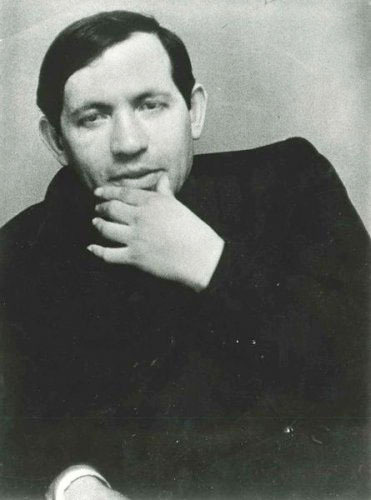 in 1935. He seldom showed his works, but he did take part in the important exhibition The Origins and Development of International Independent Art held at the Galerie nationale du Jeu de Paume in 1937 in Paris,
in 1935. He seldom showed his works, but he did take part in the important exhibition The Origins and Development of International Independent Art held at the Galerie nationale du Jeu de Paume in 1937 in Paris,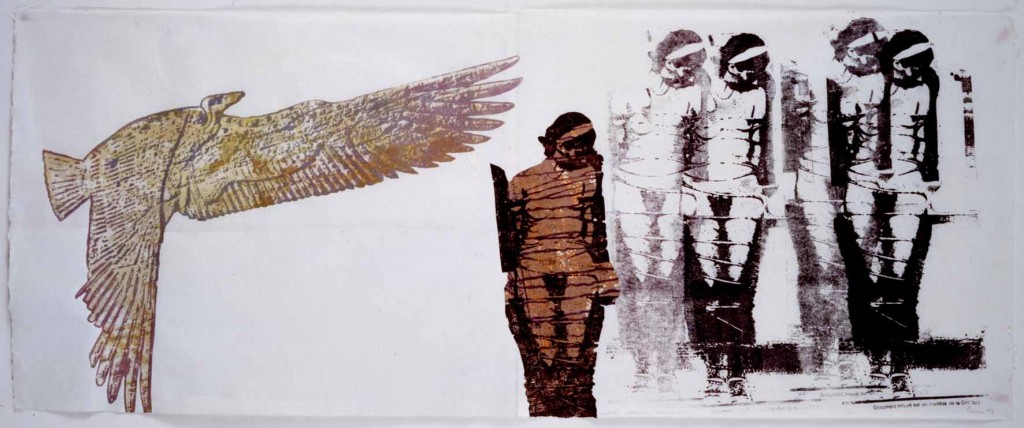 where he was at last hailed as a great painter. Soon thereafter France was invaded by German troops. As a Jew, Soutine had to escape from the French capital and hide in order to avoid arrest by the Gestapo. He moved from one place to another and was sometimes forced to seek shelter in forests,
where he was at last hailed as a great painter. Soon thereafter France was invaded by German troops. As a Jew, Soutine had to escape from the French capital and hide in order to avoid arrest by the Gestapo. He moved from one place to another and was sometimes forced to seek shelter in forests, sleeping outdoors. Suffering from a stomach ulcer and bleeding badly, he left a safe hiding place for Paris in order to undergo emergency surgery, which failed to save his life. On August 9, 1943, Chaim Soutine died of a perforated ulcer. Soutine was interred in Cimetière du Montparnasse,
sleeping outdoors. Suffering from a stomach ulcer and bleeding badly, he left a safe hiding place for Paris in order to undergo emergency surgery, which failed to save his life. On August 9, 1943, Chaim Soutine died of a perforated ulcer. Soutine was interred in Cimetière du Montparnasse,
In February 2006, an oil painting of his controversial and iconic series Le Boeuf Ecorche (1924) sold for a record £7.8 million ($13.8 million) to an anonymous buyer at a Christie's auction held in London - after it was estimated to fetch £4.8 million. In February 2007, a 1921 portrait of an unidentified man with a red scarf (L'Homme au Foulard Rouge) by Chaim Soutine sold for $17.2 million - a new record - at Sotheby's London auction house.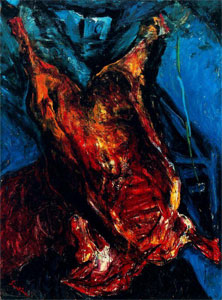
In May 2009, a unique and unusual settlement regarding Chaim Soutine's iconic painting entitled Piece de Boeuf (Piece of Beef c. 1923) was approved by Judge Laura Taylor Swain of the Southern District of New York.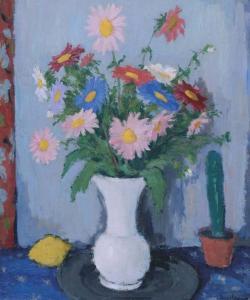 Pursuant to the settlement, the painting was returned to the Shefner Family in resolution of litigation commenced against the National Gallery of Art in Washington, D.C., Maurice Tuchman and Esti Dunow, the authors of the Soutine Catalogue Raisonnée.
Pursuant to the settlement, the painting was returned to the Shefner Family in resolution of litigation commenced against the National Gallery of Art in Washington, D.C., Maurice Tuchman and Esti Dunow, the authors of the Soutine Catalogue Raisonnée. 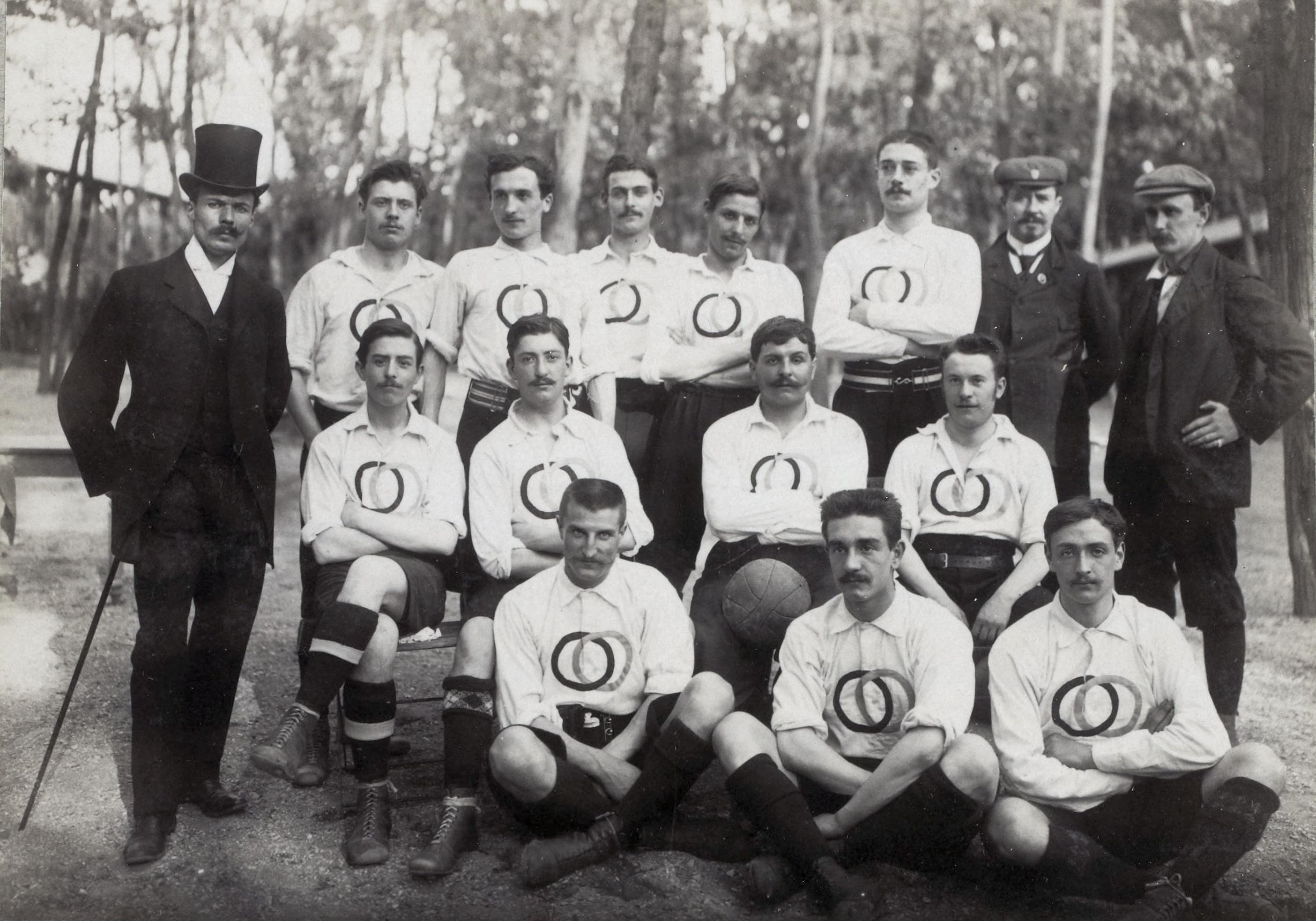 The above the 1900 french olympic team
The above the 1900 french olympic team
settlement was believed to be the first time that the National Gallery of Art had deaccessioned a non-Holocaust work of art from its permanent collection.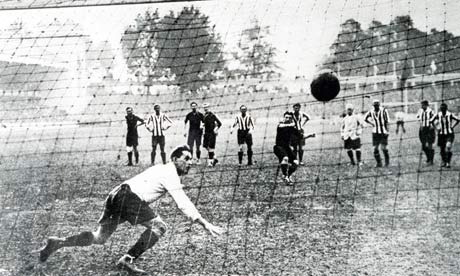 The parties agreed that the painting would remain on loan to the National Gallery of Art for the benefit of the American public for the near future
The parties agreed that the painting would remain on loan to the National Gallery of Art for the benefit of the American public for the near future
Some years after Soutine's death, Roald Dahl placed him as a character in his short story Skin
 during my visit, but which I noticed when looking at my photos.
during my visit, but which I noticed when looking at my photos. 
It seems that the concrete corridors of the shopping centre were an instant attraction for roller-skaters, and therefore an activity that the centre managers set out to ban. This sign gives an idea of the footwear fashions of the time!
Elsewhere in Paris we admire the 'original' fittings of the covered shopping arcades of the 18th and 19th centuries, places that had also previously fallen out of fashion. The layers or time - the false ceilings, seperating walls, coats of paint - are removed, taking us back to the vision of the first architects and decorators. We talk of authenticity, of rediscovery, but what would we keep today if we could put ourselves in the shoes of an archeologist from the future?Nothing.

Foujita went to Montparnasse in Paris, France. When he arrived there, knowing nobody, he met Amedeo Modigliani, Pascin, Chaim Soutine, and Fernand Léger and became friends with Juan Gris, Pablo Picasso and Henri Matisse. Foujita claimed in his memoir that he met Picasso less than a week after his arrival, but a recent biographer, relying on letters Foujita sent to his first wife in Japan, clearly shows that it was several months until he met Picasso. He also took dance lessons from the legendary Isadora Duncan
Foujita had his first studio at no. 5 rue Delambre in Montparnasse where he became the envy of everyone when he eventually made enough money to install a bathtub with hot running water. Many models came over to Foujita's place to enjoy this luxury, among them Man Ray's very liberated lover, Kiki, who boldly posed for Foujita in the nude in the outdoor courtyard. Another portrait of Kiki titled "Reclining Nude with Toile de Jouy," shows her lying naked against an ivory-white background. It was the sensation of Paris at the Salon d'Automne in 1922, selling for more than 8,000 francs.
His life in Montparnasse is documented in several of his works, including the etching A la Rotonde or Café de la Rotonde of 1925/7
 , part of the Tableaux de Paris series published in 1929.
, part of the Tableaux de Paris series published in 1929.In March 1917 in the Café de la Rotonde, Foujita met a young lady by the name of Fernande Barrey. At first, she totally ignored Foujita's efforts to engage her in conversation. However, early the next morning, Foujita showed up at Fernande's place with a blue corsage he had made overnight. Intrigued, she offered him a pot of tea and they were married 13 days later.
Within a few years, particularly after his 1918 exposition, he achieved great fame as a painter of beautiful women and cats in a very original technique. He is one of the few Montparnasse artists who made a great deal of money in his early years. By 1925, Tsuguharu Foujita had received the Belgian Order of Leopold and the French government awarded him the Legion of Honor.
In 1918, a trip to the south of France was organized by the Polish poet Léopold Zborowski
 , who had the idea that his artist-friends could sell pictures there to rich tourists. Foujita and his wife went along as did Soutine, Modigliani with his lover, Jeanne Hébuterne.
, who had the idea that his artist-friends could sell pictures there to rich tourists. Foujita and his wife went along as did Soutine, Modigliani with his lover, Jeanne Hébuterne. The trip was not, however, a success and the group had to survive on the advances that Foujita had obtained from his Paris dealer. By the time the final reckoning arrived even those funds had run out, and their landlord, ignoring the offers of pieces of art, confiscated all their baggage in lieu of payment.
The trip was not, however, a success and the group had to survive on the advances that Foujita had obtained from his Paris dealer. By the time the final reckoning arrived even those funds had run out, and their landlord, ignoring the offers of pieces of art, confiscated all their baggage in lieu of payment.In 1921, he became involved with Lucie Badoul, whom he called Youki, or "Rose Snow". She would become his third wife. The relationship ended when she became the lover, then the wife of the
 surrealist poet Robert Desnos.Desnos died in "Malá pevnost", which was an inner part of Terezín used only for political prisoners, from typhoid, only weeks after the camp's liberation. He wrote poems during his imprisonment which were accidentally destroyed following his death
surrealist poet Robert Desnos.Desnos died in "Malá pevnost", which was an inner part of Terezín used only for political prisoners, from typhoid, only weeks after the camp's liberation. He wrote poems during his imprisonment which were accidentally destroyed following his death
Fujita left Japan after the war. Today, his works can be found in the Bridgestone Museum of Art and in the Museum of Contemporary Art in Tokyo, and more than 100 in the Hirano Masakichi Art Museum in Akita.
On his return to France, Foujita converted to Catholicism. He was baptised in Reims cathedral on 14 October 1959, with René Lalou (the head of the Mumm champagne house) as his godfather and Françoise Taittinger as his godmother. This is reflected in his last major work,at the age of 80, the design, building and decoration of the Foujita chapel in the gardens of the Mumm champagne house in Reims, France, which he completed in 1966, not long before his death.
Tsuguharu Foujita died of cancer on January 29, 1968 in Zürich, Switzerland and was interred in the Cimetière de Villiers-le-Bâcle, Essonne département, France. In 2003, his coffin was reinterred at the Foujita chapel under the flagstones in the position he originally intended when constructing the chapel
Chaïm Soutine (January 13, 1893 – August 9, 1943) was a French painter of Russian Jewish origin. Soutine made a major contribution to the expressionist movement while living in Paris.
Inspired by classic painting in the European tradition, exemplified by the works of Rembrandt, Chardin and Courbet, Soutine developed an individual style more concerned with shape, color, and texture over representation, which served as a bridge between more traditional approaches and the developing form of Abstract Expressionism.
 near Minsk, (modern day) Belarus (then part of the Russian Empire). He was the tenth of eleven children. From 1910–1913 he studied in Vilnius at the Vilna Academy of Fine Arts. In 1913, with his friends Pinchus Kremegne (1890–1981) and Michel Kikoine (1892–1968), he emigrated to Paris, where he studied at the École des Beaux-Arts under Fernand Cormon. He soon developed a highly personal vision and painting technique.
near Minsk, (modern day) Belarus (then part of the Russian Empire). He was the tenth of eleven children. From 1910–1913 he studied in Vilnius at the Vilna Academy of Fine Arts. In 1913, with his friends Pinchus Kremegne (1890–1981) and Michel Kikoine (1892–1968), he emigrated to Paris, where he studied at the École des Beaux-Arts under Fernand Cormon. He soon developed a highly personal vision and painting technique.For a time, he and his friends lived at La Ruche,
 a residence for struggling artists in Montparnasse where he became friends with Amedeo Modigliani (1884–1920).
a residence for struggling artists in Montparnasse where he became friends with Amedeo Modigliani (1884–1920).La Ruche (literally the beehive) is an artist's residence at the Paris South-Western outskirts.
Located in the "Passage Dantzig," in the 15th arrondissement of Paris, La Ruche was an old three-storey circular structure that got its name because it looked more like a large beehive than any dwelling for humans. Originally a temporary building designed by Gustave Eiffel for use as a wine rotunda at the
 Great Exposition of 1900, the structure was dismantled and re-erected as low-cost studios for artists by Alfred Boucher
Great Exposition of 1900, the structure was dismantled and re-erected as low-cost studios for artists by Alfred Boucher (1850–1934), a fireman and sculptor, who wanted to help young artists by providing them with shared models and with an exhibition space open to all residents. As well as to artists, La Ruche became a home to the usual array of drunks, misfits, and almost every penniless soul needing a roof over their head.
(1850–1934), a fireman and sculptor, who wanted to help young artists by providing them with shared models and with an exhibition space open to all residents. As well as to artists, La Ruche became a home to the usual array of drunks, misfits, and almost every penniless soul needing a roof over their head.At La Ruche the rent was dirt cheap; and no one was evicted for non-payment. When hungry, many would wander over to artist Marie Vassilieff's
 soup kitchen (more genteely called her "Cantine") for a meal and conversation with fellow starving artists. The Russian painter Pinchus Kremegne got off the train at the Gare de l'Est with three rubles in his pocket. The only words in French he knew was the phrase "Passage Dantzig"; but that was all he needed to get him there.
soup kitchen (more genteely called her "Cantine") for a meal and conversation with fellow starving artists. The Russian painter Pinchus Kremegne got off the train at the Gare de l'Est with three rubles in his pocket. The only words in French he knew was the phrase "Passage Dantzig"; but that was all he needed to get him there.In the history of mankind, like Montparnasse or Montmartre, few places have ever housed such artistic talent as could be found at La Ruche. At one time or another in those early years of the 20th century, Guillaume Apollinaire, Alexander Archipenko, Joseph Csaky, Alexandre Altmann, Ossip Zadkine, Moise Kisling, Marc Chagall, Max Pechstein, Nina Hamnett,
 Fernand Léger, Jacques Lipchitz, Pinchus Kremegne, Max Jacob, Blaise Cendrars,
Fernand Léger, Jacques Lipchitz, Pinchus Kremegne, Max Jacob, Blaise Cendrars, Chaim Soutine, Robert Delaunay, Amedeo Modigliani, Constantin Brâncuşi, Amshey Nurenberg, Diego Rivera, Marevna, Luigi Guardigli and others, called the place home or frequented it. Today, works by some of these desperately poor residents and their close friends sell well, even in the millions of dollars.
Chaim Soutine, Robert Delaunay, Amedeo Modigliani, Constantin Brâncuşi, Amshey Nurenberg, Diego Rivera, Marevna, Luigi Guardigli and others, called the place home or frequented it. Today, works by some of these desperately poor residents and their close friends sell well, even in the millions of dollars.La Ruche went into decline during World War II; and by the time of the 1968 real estate boom, it was threatened with demolition by developers. However, with the support of luminaries such as Jean-Paul Sartre, Alexander Calder, Jean Renoir, and René Char, new management with a preservation mission took over in 1971, turning it into a collection of working studios.
Its interior is not open to the general public, although the exterior of La Ruche alone is worth a visit. Paintings, sculptures, photographs from its heyday and films showing some of its residents may be viewed at the Musée du Montparnasse, 21 av du Maine.
Modigliani painted Soutine's portrait several times, most famously in 1917, on a door of an apartment belonging to Léopold Zborowski (1889–1932), who was their art dealer. Zborowski supported Soutine through World War I, taking the struggling artist with him to Nice to escape the German bombing of Paris.
After the war Paul Guillaume, a highly influential art dealer, began to champion Soutine's work. In 1923, in a showing arranged by Guillaume, the prominent American collector Albert C. Barnes (1872–1951), bought 60 of Soutine's paintings on the spot. Soutine, who had been virtually penniless in his years in Paris, immediately took the money, ran into the street, hailed a Paris taxi, and ordered the driver to take him to Nice, on the French Riviera, nearly 200 miles away.
Soutine once horrified his neighbours by keeping an animal carcass in his studio so that he could paint it (Carcass of Beef). The stench drove them to send for the police, whom Soutine promptly lectured on the relative importance of art over hygiene. There's a story that Marc Chagall saw the blood from the carcass leak out onto the corridor outside Soutine's room, and rushed out screaming, 'Someone has killed Soutine.' Soutine painted 10 works in this series, which have since became his most well-known. His carcass paintings were inspired by Rembrandt's still life of the same subject, which he discovered while studying the Old Masters in the Louvre. In February 2006, the oil painting of this series 'Le Boeuf Écorché' (1924) sold for a record £7.8 million ($13.8 million) to an anonymous buyer at a Christie's auction held in London - after it was estimated to fetch £4.8 million.
Soutine produced the majority of his works from 1920 to 1929. From 1930 to 1935, the interior designer Madeleine Castaing and her husband welcomed him home during the summer in their mansion of Lèves, becoming his patrons, so that Soutine could hold his first exhibition in Chicago
 in 1935. He seldom showed his works, but he did take part in the important exhibition The Origins and Development of International Independent Art held at the Galerie nationale du Jeu de Paume in 1937 in Paris,
in 1935. He seldom showed his works, but he did take part in the important exhibition The Origins and Development of International Independent Art held at the Galerie nationale du Jeu de Paume in 1937 in Paris, where he was at last hailed as a great painter. Soon thereafter France was invaded by German troops. As a Jew, Soutine had to escape from the French capital and hide in order to avoid arrest by the Gestapo. He moved from one place to another and was sometimes forced to seek shelter in forests,
where he was at last hailed as a great painter. Soon thereafter France was invaded by German troops. As a Jew, Soutine had to escape from the French capital and hide in order to avoid arrest by the Gestapo. He moved from one place to another and was sometimes forced to seek shelter in forests, sleeping outdoors. Suffering from a stomach ulcer and bleeding badly, he left a safe hiding place for Paris in order to undergo emergency surgery, which failed to save his life. On August 9, 1943, Chaim Soutine died of a perforated ulcer. Soutine was interred in Cimetière du Montparnasse,
sleeping outdoors. Suffering from a stomach ulcer and bleeding badly, he left a safe hiding place for Paris in order to undergo emergency surgery, which failed to save his life. On August 9, 1943, Chaim Soutine died of a perforated ulcer. Soutine was interred in Cimetière du Montparnasse,
In February 2006, an oil painting of his controversial and iconic series Le Boeuf Ecorche (1924) sold for a record £7.8 million ($13.8 million) to an anonymous buyer at a Christie's auction held in London - after it was estimated to fetch £4.8 million. In February 2007, a 1921 portrait of an unidentified man with a red scarf (L'Homme au Foulard Rouge) by Chaim Soutine sold for $17.2 million - a new record - at Sotheby's London auction house.

In May 2009, a unique and unusual settlement regarding Chaim Soutine's iconic painting entitled Piece de Boeuf (Piece of Beef c. 1923) was approved by Judge Laura Taylor Swain of the Southern District of New York.
 Pursuant to the settlement, the painting was returned to the Shefner Family in resolution of litigation commenced against the National Gallery of Art in Washington, D.C., Maurice Tuchman and Esti Dunow, the authors of the Soutine Catalogue Raisonnée.
Pursuant to the settlement, the painting was returned to the Shefner Family in resolution of litigation commenced against the National Gallery of Art in Washington, D.C., Maurice Tuchman and Esti Dunow, the authors of the Soutine Catalogue Raisonnée.  The above the 1900 french olympic team
The above the 1900 french olympic teamsettlement was believed to be the first time that the National Gallery of Art had deaccessioned a non-Holocaust work of art from its permanent collection.
 The parties agreed that the painting would remain on loan to the National Gallery of Art for the benefit of the American public for the near future
The parties agreed that the painting would remain on loan to the National Gallery of Art for the benefit of the American public for the near future
Some years after Soutine's death, Roald Dahl placed him as a character in his short story Skin






















No comments:
Post a Comment